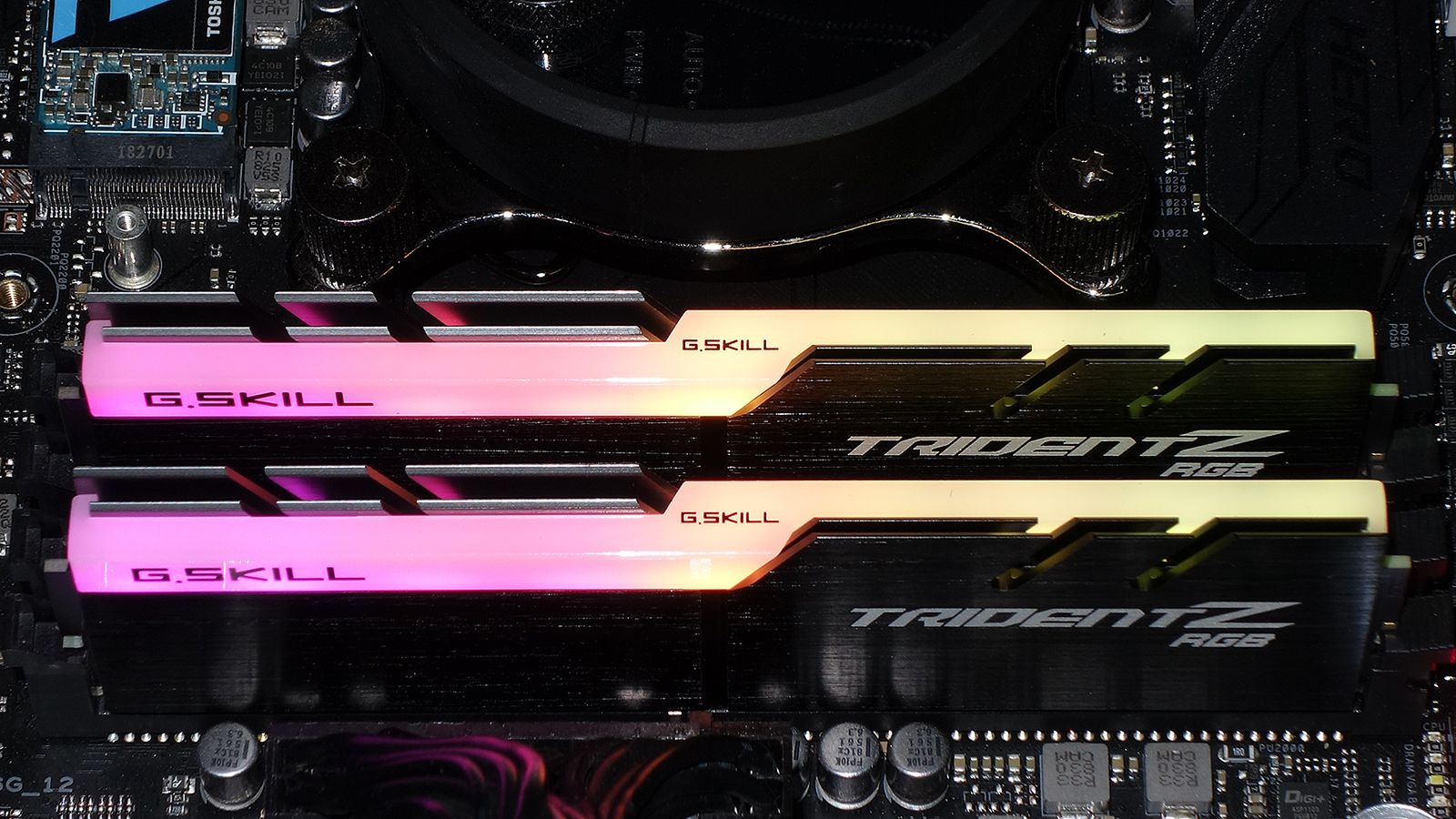Top Chinese memory maker expected to abandon DDR4 manufacturing at the behest of Beijing
CXMT just reached peak DDR4 production, but it's now prioritizing DDR5.

Top Chinese DRAM manufacturer ChangXin Memory Technologies (CXMT) will reportedly phase out DDR4 memory for servers and PCs by the middle of next year. According to Digitimes, the company is making this sudden shift to accommodate the directives of the Chinese Communist Party, especially as Beijing is pushing the country to take the global lead in AI and cloud infrastructure. In line with this, CXMT is also believed to be prioritizing work on HBM technology, targeting validation of its HBM3 chips by late this year.
This announcement caught many in the industry off guard, especially as the company had just begun mass production of DDR4 memory in late 2024. This ramp-up in capacity, paired with aggressive pricing, has caused leading memory manufacturers Micron, Samsung, and SK hynix to end production of DDR3 and DDR4 chips by late 2025.
But as the Chinese government focuses on AI to compete against the U.S.’s technological supremacy, Beijing is likely directing its local tech giants to give their support. Because of this, industry analysts anticipate CXMT issuing an end-of-life notice for its DDR4 as early as the third quarter of this year. Despite that, DD4 supply has seemingly dried up, with some 8 GB chips jumping in price by 150% because of the lack of supply.
The overall market is heading towards DDR5 production to accommodate the demand for newer devices, but a few DDR4 manufacturing lines will remain. DigiTimes Asia says that CXMT will keep making it for GigaDevice to satisfy demand for consumer memory, while Samsung and SK hynix will keep on producing them using 1z-nm nodes. That means they do not require EUV tools, which are better utilized to produce newer chips.
Despite CXMT’s success in DDR4 memory, its DDR5 chips reportedly still face some issues. It’s been reported that some of its latest samples have failed some tests, with the memory chips becoming unstable when they hit 60 degrees Celsius and up, some 25 degrees lower than the up to 85 degrees Celsius that Samsung chips can operate in. There’s also doubt whether CXMT’s DDR5 memory would perform as expected in sub-zero temperatures. This likely would not be an issue with most users, though.
Follow Tom's Hardware on Google News to get our up-to-date news, analysis, and reviews in your feeds. Make sure to click the Follow button.
Get Tom's Hardware's best news and in-depth reviews, straight to your inbox.

Jowi Morales is a tech enthusiast with years of experience working in the industry. He’s been writing with several tech publications since 2021, where he’s been interested in tech hardware and consumer electronics.
-
teeejay94 If they are going to abandon it altogether I would like to see heavy focus on producing low latency high clocking memory, I think speed is done for, its where it should be at if not higher, latency is too high tho and reduced latency at 7200MT/s would see a benefit to some degree. And MB manufacturers and game developers please optimize high clocking ram as well I can't even run my 7200MT max speed without most things freaking out including windows itself. Ram may need to see voltage above 1.45v to achieve proper stability. That's another conversation though.Reply -
Eximo They design to a power target, not speed. High speed memory is the result of careful binning and overclocking. That is what you pay the 'gaming' memory companies for. Everyone else just wants stability and volume.Reply
In truth the answer to higher speed memory is tighter integration. Which is why you see much higher performance numbers on laptop SoCs. So either we go CAMM2 on the desktop for modular memory, or desktop CPUs start shipping with integrated memory. That we can even hit speeds like 10000+ is kind of amazing. -
bit_user Reply
Memory bandwidth has not kept pace with CPUs and GPUs. It needs to keep going up, if you want to have any hope of keeping most of those cores busy.teeejay94 said:If they are going to abandon it altogether I would like to see heavy focus on producing low latency high clocking memory, I think speed is done for, its where it should be at if not higher,
DRAM latency only accounts for about 10% to 20% of overall system memory latency.teeejay94 said:latency is too high tho and reduced latency at 7200MT/s would see a benefit to some degree.
Furthermore, the rated memory latency (most notably CAS timing) only pertains to a situation where your memory subsystem is underutilized. Near full utilization, your typical latency benefits more by increasing bandwidth. HBM is a great example of this - it typically has higher latency than DDR, but its massive bandwidth means queue occupancy tends to be quite low. This leads to lower typical latency, in strenuous workloads.
That's a hardware issue. There's nothing software developers can do about it. If your hardware doesn't work correctly, software is going to malfunction. There's no way they can anticipate or reliably work around such problems. Make sure your hardware works properly, and then you shouldn't have any more problems.teeejay94 said:And MB manufacturers and game developers please optimize high clocking ram as well I can't even run my 7200MT max speed without most things freaking out including windows itself. Ram may need to see voltage above 1.45v to achieve proper stability. That's another conversation though. -
Notton DDR5 has been a flop.Reply
DDR6 can't come soon enough. It doubles DDR5's channel width to 4x64-bit, and we'll get to see quad-channel on a desktop CPU without resorting to HEDT or Strix Halo. -
systemBuilder_49 Reply
Good riddance! 32GB Of 3600 DDR4 Memory for $25 (the recent aliexpress price) is just stupid and an obvious sign that China is trying to murder all DRAM makers worldwide!Admin said:ChangXin Memory Technologies (CXMT) is expected to end production of DDR4 memory in favor of DDR5 by mid-2026.
Top Chinese memory maker expected to abandon DDR4 manufacturing at the behest of Beijing : Read more -
bit_user Reply
Huh? No.Notton said:DDR5 has been a flop.
Early on, DDR5 regressed on latency. For gamers, this was a bad deal. However, in heavy multi-core workloads, the added bandwidth and parallelism provided by DDR5 has been a godsend. This can be most easily seen here:
Source: https://www.anandtech.com/show/17047/the-intel-12th-gen-core-i912900k-review-hybrid-performance-brings-hybrid-complexity/8
Since then, DDR5 has made a lot of progress on latency, while continuing to scale up to ever higher amounts of bandwidth.
If you just want to play games, go ahead and use DDR4. If you buy a CPU with lots of cores/threads and do heavy compute workloads, it'd be counterproductive to stick with DDR4.
Technically, DDR5 is already quad-channel. Each 64-bit DIMM is subdivided into two, independent, 32-bit subchannels. This improves memory parallelism, though I think the main reason was just to supporting higher clock speeds. We first saw this with LPDDR4, I think.Notton said:DDR6 can't come soon enough. It doubles DDR5's channel width to 4x64-bit, and we'll get to see quad-channel on a desktop CPU without resorting to HEDT or Strix Halo. -
thestryker It'll be interesting to see what sort of impact this has on the DDR4 market given that Samsung, Micron and SK Hynix have had to step back for economic reasons.Reply
DDR6 is a long way out still as the specification hasn't been finalized yet and the last update I saw they hadn't decided on signaling yet. I'd guess 2027 at the earliest unless server demand is high, but I'm betting MRDIMM is covering that gap. LPDDR6 is much closer to finalization, but I think we probably won't see it in PC products until next year. -
Notton Reply
Disagree. You can only get the improved performance in DDR5 with a whole bunch of asterisks.bit_user said:Since then, DDR5 has made a lot of progress on latency, while continuing to scale up to ever higher amounts of bandwidth.
i.e. pumping in 1.35~1.65V to hit high speeds and low latency, inability to run 4-DIMMs without a whole bunch of trial and error, and no guarantee of hitting 6000MT/s on AMD or 6400MT/s on Intel with higher density DIMMs.
DDR5 only guarantees 3600~5600MT/s at stock voltage, where as DDR4 managed 3200MT/s.
DDR5 SODIMM is especially disappointing. -
circadia Reply
huh? isn't that a good thing for us consumers, especially people building a PC on a tight budget?systemBuilder_49 said:Good riddance! 32GB Of 3600 DDR4 Memory for $25 (the recent aliexpress price) is just stupid and an obvious sign that China is trying to murder all DRAM makers worldwide!
edit: by the way, I'm interested in buying those pairs of DDR4 sticks, where did you see it on AliExpress? -
thestryker Reply
This is literally no different than DDR4/3, because if you weren't running JEDEC speed and timings you were pumping voltage. The "standard" DDR4-3600 CL16 for AMD is typically 1.35 V or higher. On the Intel side voltages could get up to 1.6 V for extreme kits and 1.4-1.5 V was fairly common for the kits in the 4000s until later in DDR4's life.Notton said:i.e. pumping in 1.35~1.65V to hit high speeds and low latency,
Not much different than DDR4 when you're running past JEDEC speeds. Therein lies a big difference though: for Intel DDR5-7200 is a pretty basic speed that will work in 1DPC on RPL/ARL without trouble. That's over 28% higher speed than maximum non-CUDIMM JEDEC which would be like running ~DDR4-4100. You could probably count single digit percentage of CPUs capable of running that in a 2DPC configuration if any could at all.Notton said:inability to run 4-DIMMs without a whole bunch of trial and error
For AMD? Maybe (I've heard people who can't run DDR5-6000 period). For Intel ADL? Maybe. For Intel RPL/ARL? No they work just fine at 6400.Notton said:no guarantee of hitting 6000MT/s on AMD or 6400MT/s on Intel with higher density DIMMs
DDR4 started at 1600 and launched to market ~2014 (I believe the first consumer CPUs to support it officially supported 2133). DDR4-3200 didn't reach the market for around another 4-5 years. Zen 2 was the first CPU on the market to officially support DDR4-3200 which would have been 2020.Notton said:DDR5 only guarantees 3600~5600MT/s at stock voltage, where as DDR4 managed 3200MT/s.
DDR5 started at 3600 and the first CPUs supported 4800 officially which was in 2021. By 2024 JEDEC ratified up to 8800 and 6400 modules launched. Seems like the rate of improvement is very similar with DDR5 having a much higher ceiling (assuming these speeds happen of course).
How so? It carries the same JEDEC timings/speed as UDIMMs/CUDIMMs. DDR5-4800 is 16.6~ns latency compared to DDR4-3200 with 13.75ns so for a bit less than 3ns of additional latency there's a 50% bandwidth gain.Notton said:DDR5 SODIMM is especially disappointing.